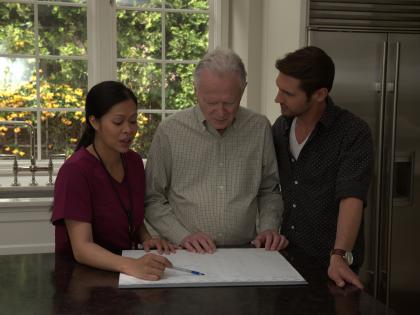South Dakota State Alzheimer’s Plan Overview

Established in 2015, the South Dakota Alzheimer’s Disease State Plan Work Group expanded in April 2017 to include a larger group of stakeholders charged with creating the state’s response to Alzheimer’s. The Work Group conducted a comprehensive needs assessment and hosted town halls across the state, which were supported by a South Dakota Community Foundation Community Innovation Grant. In June 2018, the South Dakota State Plan to Address Alzheimer’s Disease and Other Dementias was published.
South Dakota 2026 Policy Priorities

Improve Quality of Home Care Through Dementia Training
People living with Alzheimer’s and other dementia face unique health needs. A cornerstone of providing quality dementia care is dementia-specific training for home care staff. Home health aides, however, do not have sufficient knowledge on dementia to effectively support those living with dementia. The Alzheimer’s Association is calling on state lawmakers to pass legislation requiring dementia-specific training requirements and regulations for non-medical home health agency staff in the state.
South Dakota State Advocacy Day
Join us for South Dakota’s State Advocacy Day — a powerful opportunity to make your voice heard! Hear directly from our bipartisan legislative champions, get the inside scoop on bills that impact people living with dementia and their caregivers, and meet face-to-face with your state legislators to push for meaningful change.
Sign Up to Learn About Advocacy Opportunities in South Dakota

Find My Chapter
Together, we’re making an impact. Find an Alzheimer’s Association chapter in your community for more ways to engage.
Contact Us
State Affairs Contact: Grace Gill
Phone: 605.377.6445
Email: gegill@alz.org
16,500
people living with Alzheimer’s in South Dakota
27,000
South Dakotans are providing unpaid care
$230 Million
Medicaid cost of caring for people living with Alzheimer’s (2025)
143%
increase in Alzheimer’s deaths 2000-2022
13%
in hospice with a primary diagnosis of dementia
88.2%
increase of geriatricians in South Dakota needed to meet the demand in 2050
Resources to Drive Change in South Dakota
The following resources developed by AIM and the Alzheimer’s Association will help you learn more about the issues impacting people living with Alzheimer’s and their caregivers, how South Dakota policymakers are addressing these gaps, and how you can help drive change.